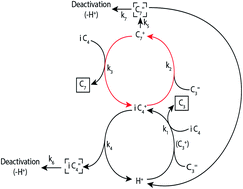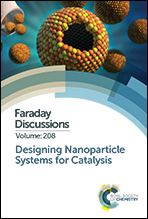The challenge of catalyst prediction
Abstract
New insights and successful use of computational catalysis are highlighted. This is within the context of remaining issues that prevent theoretical catalysis to be fully predictive of catalyst performance. A major challenge is to include in modelling studies the transient initiation as well as deactivation processes of the catalyst. We will illustrate this using as an example for solid acid catalysis, the alkylation process, and for transition metal catalysis, the Fischer–Tropsch reaction. For the alkylation reaction of isobutane and alkene, an important reaction for high octane gasoline, we will present a deactivation model. For the Fischer–Tropsch reaction, which converts synthesis gas into gasoline grade molecules, we discuss structural reorganization of the catalyst induced by reaction.

- This article is part of the themed collection: Designing Nanoparticle Systems for Catalysis


 Please wait while we load your content...
Please wait while we load your content...